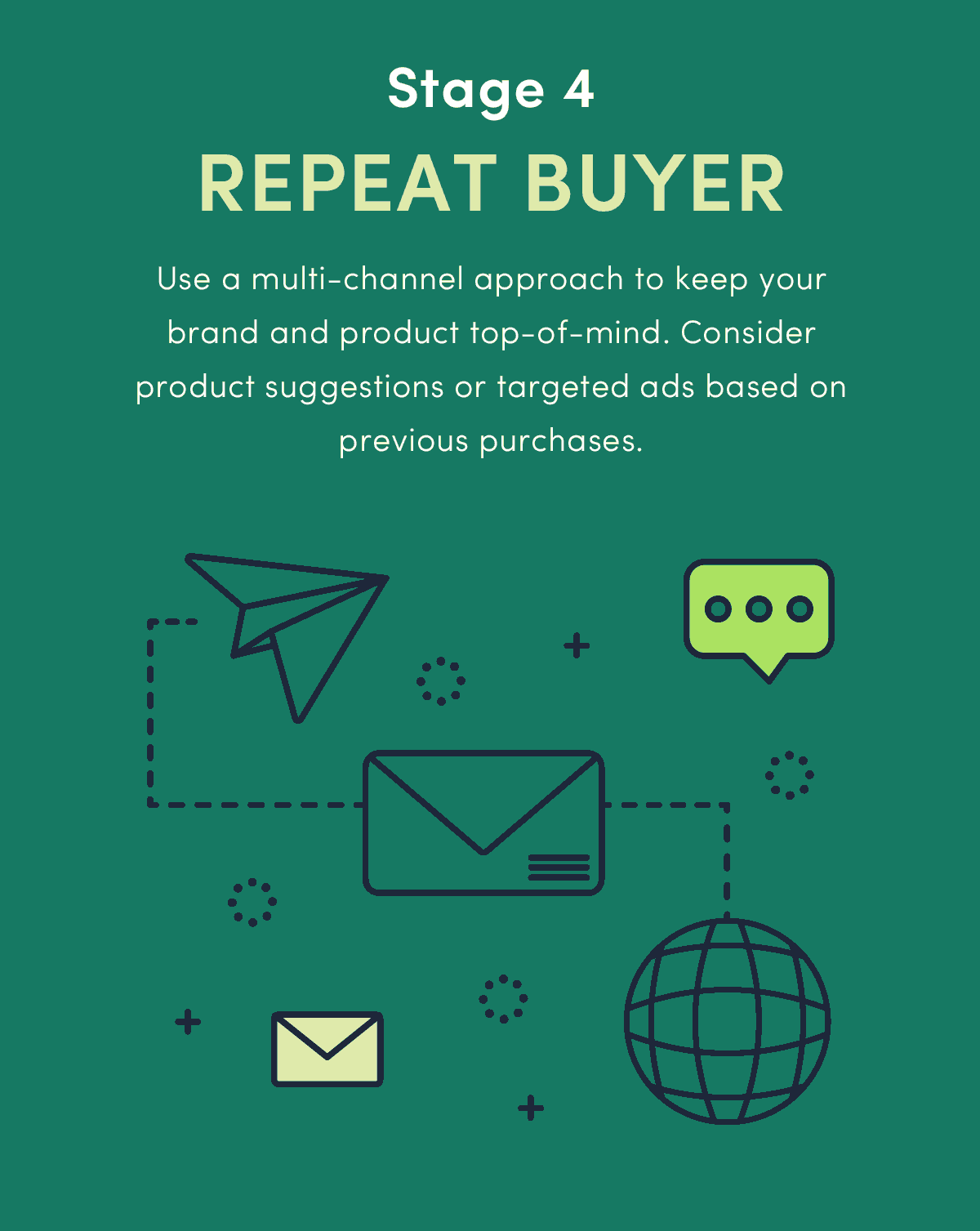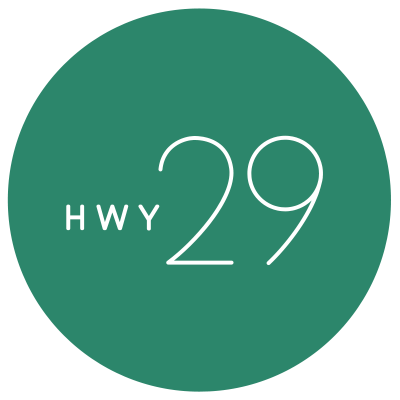How to Sell Wine in the 21st Century – Understand the Sales Funnel
To be successful, move beyond a “one size fits all” approach and tailor your marketing messaging to customers based on their position in the sales funnel. The term “sales funnel” is used to describe each stage in the purchasing process and understands that you need to cast a wide net in order to convert even a few customers.
A customer rarely goes from never hearing of your brand to a loyal club member as the result of one marketing campaign. Instead, you need to segment your audience into five groups and adapt your messaging accordingly. Your ability to quickly push customers down the sales funnel depends on the quality of your marketing message and the stickiness of your brand.
Wineries must challenge themselves to differentiate their brand in this competitive industry and create a viral message for each stage of the funnel. Simply saying you have high-scoring wines or Chardonnay that tastes like “golden apples and Crème Brûlée” is not a convincing marketing message anymore. Your brand must develop an authentic voice rooted in your people or your unique perspective and disseminate it across each stage of the sales funnel.

Stage 1- Awareness
At last count there were 10,000 wineries in the United States and probably more if you include custom crush brands. The market is over saturated and your brand’s introduction to consumers needs to stand apart. Brainstorm as many words as you can to describe your brand. Hone in on your favorite three and develop a one to two sentence message for each. These mantras will guide all of your awareness marketing messaging.
How to Deploy:
Create multi-channel photo and video content for each of your mantras. A lifestyle photo makes a great postcard and Instagram ad. A professionally shot one-minute video is perfect for your website or a Facebook ad campaign.
In a digital age, sandwich boards on the side of the highway with balloons are insufficient awareness campaigns. Instead, run a Facebook and Instagram marketing campaign targeted within 20 miles of your tasting room with an ad set for each mantra and test them for a month. Push forward with the most successful ad sets, double down on your message, and build your audience.
Postcards and brand brochures are great awareness building tools. Anytime a customer gifts your wine, include print material in the shipping box. At wine festivals, be sure to have printed materials for the taking focused on your three mantras. Your goal is to drive people into your tasting room or onto your website. Then, you can push them to the next stage of the funnel.

Stage 2 - Interest & Consideration
When building awareness, some will decide your brand doesn’t resonate with them and that is ok! You should be thankful for the quick “no” because it means you don’t need to spend money or time marketing to them. For every 1,000 people you message with your awareness campaign, only 800 or 500 may want to go to the next stage. This is why the funnel shrinks.
To target consumers in the next funnel stage, you need to collect your customer’s data. This can be an email sign up on your website, collecting their contact info when they make a reservation, or by using Facebook Pixel and Google Tag Manager to plant cookies online. Setting up Facebook Pixel is fairly straightforward, can be done in a matter of minutes or with help of a developer, and is a minimum requirement to market in the 21stcentury.
How to Deploy:
Run a Facebook and Instagram ad targeted at viewers of your awareness campaign with a specific call to action. Encourage visits to your tasting room or provide a special offer to drive an online purchase. For consumers that view specific wines on your website, but didn’t make a purchase, you can run dynamic product ads on Facebook, Instagram, and Google to retarget these consumers and advertise the specific wine they viewed. These ads can easily be set up with an automated shopping feed.
If you collected email addresses during your awareness marketing, segment your list into a group that has not purchased. Send an email acknowledging they have not purchased and encourage them to visit the tasting room or make an online purchase. These emails can be sent through a program like MailChimp or individually via your personal email. Better yet, if you have phone numbers, pick up the phone to personally invite them to stop by the tasting room during their next trip. Special events also make great campaigns to push customers through this stage of the sales funnel.

Stage 3 - Bottle Purchase
Your prospect learned of your brand, considered making a purchase, and then finally acted. This is a great success, but the journey is not yet over! You must make this customer feel special and appreciated.
How to Deploy:
Personally thank each customer for their purchase. Snail mail a handwritten thank you note on a branded card. Wait two weeks after shipment, then make a personal phone call to see how they are enjoying the wine. This stage should be the most genuine and non-conversion focused. Don’t immediately ask for the next sale in your thank you note or on the call. Instead, politely mention they can reach out to you on their next visit to town or if they need assistance.

Stage 4 - Repeat Buyer
After a respectful waiting period, it’s finally time to push the customer to make a repeat purchase. How much time is the right amount of time to wait? Take a look at your sales data and measure the average interval between purchases. Decide if this frequency fits your business model and pick an interval that pushes customers to make that next purchase a bit sooner, but don’t be too aggressive.
How to Deploy:
Ask for that next sale through various channels such as phone, email, social media, or paid advertising. I suggest taking a multi-channel approach and select at least two channels. Your messaging for this stage of the funnel should be personal, acknowledging that they made a purchase, and suggest why and what they should purchase next. Your messaging could be “We know you loved our 2015 Pinot Noir, and we think you will love this 2016 even more. It’s an amazing vintage- give it a try!” or “Our fans that love our Pinot Noir also love our Chardonnay because it is grown on the same vineyard and represents our unique style. Give it a try and let us know if you agree.” When in doubt, you can advertise the exact wine they purchased and encourage them to purchase more this time.

Stage 5 - Club Member
Some customers are willing to jump from their first purchase straight to becoming a club member, but typically it takes a few sales to convert them. Wine clubs are the holy grail of the Direct-to-Consumer channel and you should invest heavily in this stage of the funnel. You have a proven loyal customer and the ROI on a membership is too high to ignore.
How to Deploy:
Segment your customer list to include purchaser that have not yet joined your membership. Send a personal email to these customers inviting them to join the membership and telling them about the benefits. Take this list of customers and load it into Facebook and create a marketing campaign specifically targeted to them. Show them photos and videos of the wines you know they love and tempt them with your member perks. Your brand’s hook might be exclusivity and the fear of missing out or advertising a club discount. Either way, couple a digital campaign with a personal touch. Consumers want to know there is a human behind the brand that they can connect too.
When in Doubt, Measure, Measure, Measure
Marketing campaigns tailored to each stage in the sales funnel will produce better results than a “one size fits all” message, but you must be agile and adjust your messaging to see which leads to the highest conversion. Don’t rely on your gut to gauge if your marketing is working. Set up Google Analytics on your website, use your e-commerce platform to segment your customers, and track your campaigns to see which result in sales.
Most e-commerce platforms such as WineDirect and Commerce7 can export your customer list and show each customer’s status such as subscriber, purchaser, repeat purchaser, and club member. Total each category and draw your own sales funnel. You will see the percentage of customers in each stage of the funnel and can calculate how many prospects you will need to touch in order to convert one new club member. Run your marketing campaigns and each month remeasure your sales funnel. Use this data to inform you what is working and what is not. Readjust your ineffective messages and double down on your most viral mantra. This is how you sell wine in the 21st century.
Simon Solis-Cohen is the founder of Highway 29 Creative, a leading digital and creative agency serving the wine industry. He challenges clients to think about the future and constantly innovate. The agency chases data, not fads, and provides one-stop shopping for wineries looking to enter or jolt their direct to consumer sales. Their approach starts by designing and building a website focused on conversion (wine sales, club sign ups & tasting room reservations) and then dives into each digital channel with consistent and effective content and messaging. What to learn more or looking for advice? Shoot Simon a message at simon@hwy29creative.com.

